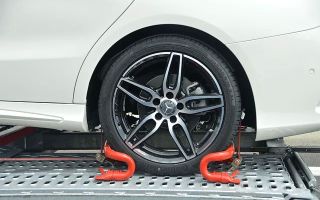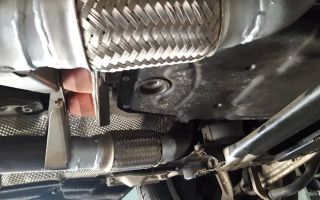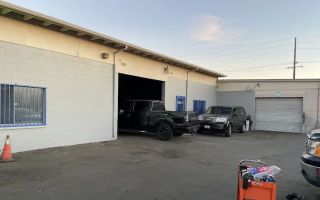How to Avoid Flats When Driving Through Potholes
Driving through potholes can be a nightmare for your car, especially when it leads to a flat tire. As a frequent commuter, I’ve experienced the frustration of hitting a pothole unexpectedly and feeling the sharp drop in my tire pressure soon after. In this article, I’ll share practical tips and techniques I’ve learned over the years to avoid flats when driving through potholes. These tips not only help protect your tires but also improve your overall driving experience.

Shell
18525 N Conduit Ave, Queens, NY 11413, USA
1. Understanding the Impact of Potholes on Your Tires
Potholes, often caused by road damage and extreme weather conditions, can be more than just an inconvenience—they can cause serious damage to your tires. When a tire hits a pothole, the impact forces the rubber against the hard surface of the road, which can cause the tire to puncture or burst. This sudden pressure can also lead to alignment issues and suspension damage, making the pothole a threat to more than just your tires.
While potholes are sometimes unavoidable, especially in poorly maintained roads, understanding how they affect your vehicle can help you take proactive steps to avoid a flat tire. I’ve learned firsthand that the best way to deal with potholes is to be prepared and take preventive measures while driving.
2. Tips for Driving Through Potholes Safely
Driving carefully and following the right techniques can significantly reduce the chances of damaging your tires when you encounter a pothole. Here are some steps I’ve found helpful:
2.1 Slow Down
One of the simplest and most effective ways to avoid flats when driving through potholes is to slow down. Hitting a pothole at high speeds increases the risk of damaging your tire and can cause a flat in an instant. Slowing down allows you more time to react to the pothole and minimizes the impact. I make it a habit to reduce my speed when driving on roads that are poorly paved or when I’m aware of potential potholes.
2.2 Maintain a Safe Distance from Other Vehicles
Keeping a safe distance from the car ahead of you is another essential strategy. When cars are too close together, it’s easy to miss seeing a pothole until it’s too late. By staying farther back, you give yourself more time to spot potholes and react in time. I’ve found that maintaining this distance not only helps with pothole avoidance but also gives me peace of mind when driving in busy traffic.
2.3 Steer Around Potholes When Possible
If you can safely avoid the pothole, steer around it. Sometimes it’s a simple matter of making a slight turn to the left or right to avoid hitting the pothole directly. Always check your mirrors and ensure the lane next to you is clear before making this move. I’ve managed to save my tires many times simply by swerving a little to avoid the deep ones.
2.4 Avoid Braking Suddenly
Braking suddenly when you hit a pothole can cause more damage than simply driving over it. When you brake too hard, the weight of the vehicle shifts abruptly, increasing the pressure on the tire and potentially causing a blowout. I’ve learned that it’s better to maintain a steady foot on the pedal and allow the car to pass over the pothole smoothly without sudden deceleration.
2.5 Stay Alert to Road Conditions
It’s important to stay alert when driving, especially when you’re aware that the road conditions are poor. Always be on the lookout for signs of road damage, such as cracks, uneven surfaces, and of course, potholes. I make it a habit to scan the road ahead, so I’m prepared to handle any obstacles that may come my way. In cases where the road is particularly bad, I will often look for a safer, alternate route to avoid putting my tires at risk.
3. What to Do If You Hit a Pothole
Sometimes, despite your best efforts, you might still hit a pothole. In these situations, it’s important to check for damage and take action as needed. I’ve learned a few key steps that help minimize long-term issues after hitting a pothole:
3.1 Check for Visible Damage
After hitting a pothole, pull over and inspect your tires for any visible damage, such as punctures, bulges, or cracks. If you notice anything unusual, it’s best to call for a roadside assistance service or take your car to a mechanic to assess the damage. I’ve found that early detection can prevent further issues, such as a flat tire or an unsafe driving situation.
3.2 Test Your Tire Pressure
Even if there’s no visible damage, it’s a good idea to check your tire pressure after hitting a pothole. A sudden drop in tire pressure may not always be noticeable, but it can lead to a flat tire over time. I always carry a portable tire pressure gauge to ensure my tires are properly inflated, especially after a rough ride.
3.3 Get Professional Help If Necessary
If you’re unsure whether your tire is safe to drive on after hitting a pothole, it’s best to consult with a professional. In some cases, a seemingly minor issue can lead to major damage down the road. I’ve called roadside assistance a few times, and having a professional check my tires gave me peace of mind knowing I was safe to continue driving.
4. Maintaining Your Tires for Long-Term Protection
Aside from avoiding potholes, maintaining your tires in good condition will help protect them from damage in the long run. Here are a few tips I follow to keep my tires in top shape:
4.1 Regular Tire Inspections
Regularly inspecting your tires for wear and tear, checking for any cuts, or monitoring the tread depth can help catch potential problems early. I make it a point to inspect my tires every few weeks, especially during seasonal changes when the road conditions might vary. This ensures I catch any issues before they become bigger problems.
4.2 Proper Inflation
Keeping your tires properly inflated is essential for their longevity. Tires that are under or over-inflated are more prone to damage, especially when hitting road hazards like potholes. I regularly check the tire pressure, especially before long trips, and make sure my tires are at the recommended level.
4.3 Rotate Tires Regularly
Rotating your tires every 6,000 to 8,000 miles helps ensure even wear, extending their life and preventing uneven damage that could make them more vulnerable to issues caused by potholes. I always make sure to rotate my tires when I get an oil change to keep them in good shape.
5. What to Do If You Need Roadside Assistance
If you ever find yourself stuck on the road with a flat or damaged tire due to a pothole, it’s important to know when and how to call for help. In situations like these, a fast and reliable towing service can make all the difference. Having a roadside assistance plan like Rescue & Towing is a great way to ensure that help is just a phone call away. Whether you need a tow to the nearest service station or a tire replacement, getting professional help is the quickest way to get back on the road safely.























